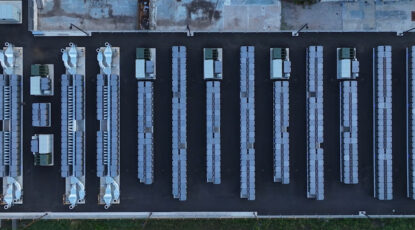Generative artificial intelligence (AI) has been making waves lately, pushing the boundaries of what machines can do in terms of creativity and human-like outputs. It is changing the way we work, the way we do business and even the way we create. But as generative AI models become much more complex and larger, they consume significantly more power, and that poses some challenges for the data center industry.
The relationship between the complexity and capability of generative AI models and their power consumption is a significant concern from both environmental and practical perspectives. The energy consumption associated with powering these models not only contributes to carbon emissions and environmental degradation but also poses challenges for data center operators and centralized utility infrastructure providers.
Generative AI models are capable of understanding and analyzing vast amounts of data, detecting patterns humans cannot, and generating novel and remarkably accurate outputs. The training process involves feeding the model with extensive datasets and iteratively adjusting the network’s parameters to optimize its performance and output. This iterative process is computationally intensive and demands substantial computational resources, often in the form of powerful GPUs or specialized hardware accelerators. But the vast majority of existing data centers are not equipped to handle the rack densities these devices require.
To accommodate the energy-intensive nature of AI workloads, integrating GPUs (and other high density platforms) into the data center infrastructure requires significant modifications, including the need to upgrade power distribution systems, utility transmission and substation capacity, deploying new cooling technologies, and rethinking physical space arrangements. It’s a balancing act, finding the sweet spot between power availability and rack utilization, ensuring efficient resource utilization while attempting
Here’s where industry leaders can truly make a difference. The centralized electrical grid is struggling to keep up with the surging energy demands of AI workloads, especially with the increasing adoption of GPU-intensive tasks. This strain on the power infrastructure not only challenges its capacity but also contributes to a concerning rise in carbon emissions, hampering global efforts to combat climate change. To address these pressing issues, a shift towards distributed energy solutions is imperative.
Distributed energy solutions offer a decentralized approach to power generation, enabling data centers to reduce their carbon footprint and reduce their reliance upon traditional centralized grids. However, the benefits extend beyond environmental concerns. Embracing distributed energy solutions bolsters the predictability, the resilience, and the reliability of the power supply, safeguarding the industry against disruptions caused by centralized power infrastructure limitations and un-forecasted cost increases.
In this landscape, Bloom is poised to seize a unique opportunity. By providing solutions that supplement existing power infrastructure in data centers, Bloom can swiftly meet the increased energy demands without the need for lengthy substation or transmission upgrades. This agility enables developers and colocation providers to upgrade their capacity, accommodating the higher power requirements of GPU workloads in a timely manner. Bloom energy servers can work seamlessly with existing utility and data center infrastructure, especially when there is also grid power available. We can simply supplement the existing power, directly to the building, working in unison with the centralized supply.
Jeff Barber is Bloom Energy’s vice president of global data centers. This piece is part of a three-part series on power constraints and AI workloads, adapted from his LinkedIn newsletter “Net Zero.” You can read it in full here.




